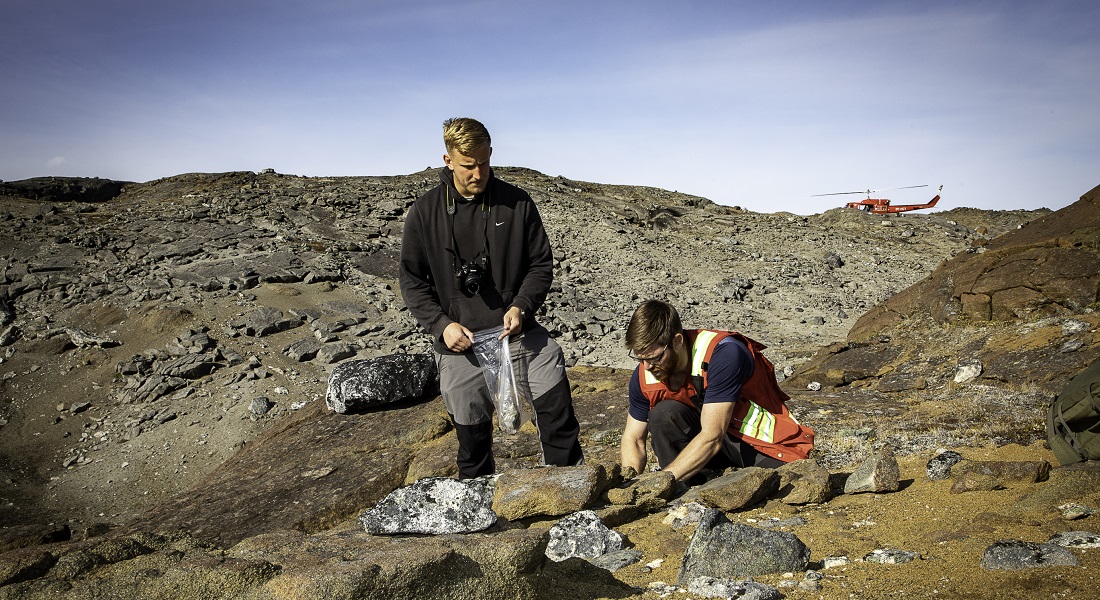Terrestrial riddle solved: We now know where our oceans came from
One of planet Earth’s great riddles has been clarified. We now have proof of the origin of our oceans. The evidence is found in billions of years old rocks that were collected in Greenland by a Danish researcher from the University of Copenhagen.

Shortly after Earth was formed 4.5 billion years ago, all readily evaporable elements disappeared in a giant collision that created the moon. This giant impact left Earth completely dry. Over the next many millions of years, our planet was bombarded by meteorites from the outer solar system, ones rich in carbon and water. So goes a widespread theory of the origin of our planet’s oceans. This theory can now be confirmed.
Researchers from the University of Copenhagen and other institutions have discovered a unique isotopic composition of the element ruthenium in ancient Greenland rocks. The discovery proves that water came to Earth from meteorites originating in the outermost reaches of our solar system – after the formation of Earth and the Moon.
"We are the first to have found a unique isotopic fingerprint of Earth's earliest building block that informs us about the composition of early Earth, and also, about where the components of our oceans came from, which are the basis for life on Earth. In doing so, one of our planet’s greatest riddles has been solved," says Assistant Professor Kristoffer Szilas, a geologist at the University of Copenhagen’s Department of Geosciences and Natural Resource Management.
Now it all adds up
The theory that meteorites from the outer solar system - known as chondrites - brought water to Earth has been severely handicapped until now. This is because every meteorite ever found on Earth has an entirely different isotopic composition than the present day planet. As such, evidence was lacking to support the hypothesis that the oceans were formed from chondrites. However, with the isotope fingerprint from Greenland, a stone sample has been found that, for the first time, has a value that differs from these meteorites. This proves two things:
"Now we know that early Earth was made up of some other material than previously suspected – one that we have found the isotopic fingerprint of. And, we now have physical evidence to prove that if you mix the early Earth with chondrites from our outer solar system, you end up with the composition of present day Earth. This tells us that it was chondrites, specifically, that brought about oceans, after both the Earth and moon had already formed. It all adds up," says Kristoffer Szilas.
Szilas found the several billion-year-old rocks northeast of Nuuk, Greenland. Thereafter, specialists from the University of Cologne, among others, performed high-precision measurements of the ruthenium isotopes in the stone samples. The study has just been published in the scientific journal, Nature.
Window into early Earth
The area of West Greenland from where the rock samples were taken has a uniquely well-preserved chemical fingerprint from long before Earth was pummeled by meteorites 3.9 billion years ago.
"This is a small, unique window into the very earliest stages of Earth. The composition of this isotope can neither be artificial, nor created by terrestrial processes. It is a fragment of the original building blocks, as they existed prior to the meteorite bombardment, which have survived over several billion years of tectonic processes."
While the researchers remain unable to precisely date their samples, they have been able to determine that they are at least 3.8 billion years old. The next step is to complete a more precise isotope-dating.
The research was conducted by: Mario Fischer-Gödde (Institut für Geologie und Mineralogie, University of Cologne, Germany), Bo-Magnus Elfers (Institut für Geologie und Mineralogie, University of Cologne, Germany), Carsten Münker (Institut für Geologie und Mineralogie, University of Cologne, Germany), Kristoffer Szilas (Department of Geoscience and Nature Management, University of Copenhagen), Wolfgang Maier (School of Earth and Ocean Sciences, Cardiff University, UK), Nils Messling (Institut für Geologie und Mineralogie, University of Cologne, Germany), Tomoaki Morishita (Faculty of Geosciences and Civil Engineering, Kanazawa University, Japan), Martin Van Kranendonk (Australian Centre for Astrobiology, University of New South Wales, Australia) and Hugh Smithies (Geological Survey of Western Australia, Australia).
Topics
Related News
Contact
Kristoffer Szilas
Assistant Professor
Geology
Department of Geosciences and Natural Resource Management
University of Copenhagen
+45 35 32 65 47
krsz@ign.ku.dk
Maria Hornbek
Journalist
SCIENCE Management and Communication
University of Copenhagen
+45 22 95 42 83
maho@science.ku.dk
Fakta
- The study confirms the theory of, what among geologists, is called "the late veneer", which refers to the addition of meteoric materials after the Earth's core and moon were formed.
- Kristoffer Szilas expects that the new discovery will enlighten us about other planets in the solar system, where Mercury, Venus and Mars probably had the same isotopic composition as Earth.
- An isotope fingerprints or isotope signature is a variation in the mass of a substance. It can be used to shed light on the processes an element has been through.
- The new discoveries are part of Kristoffer Szilas's research project "The Oldest Rocks On Earth", supported by the Carlsberg Foundation.
